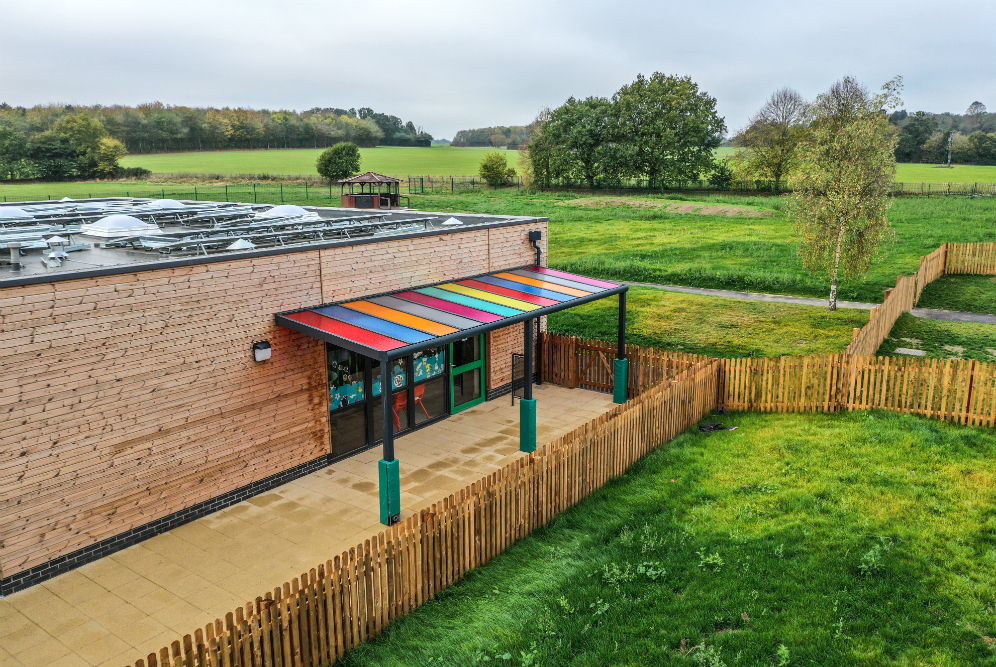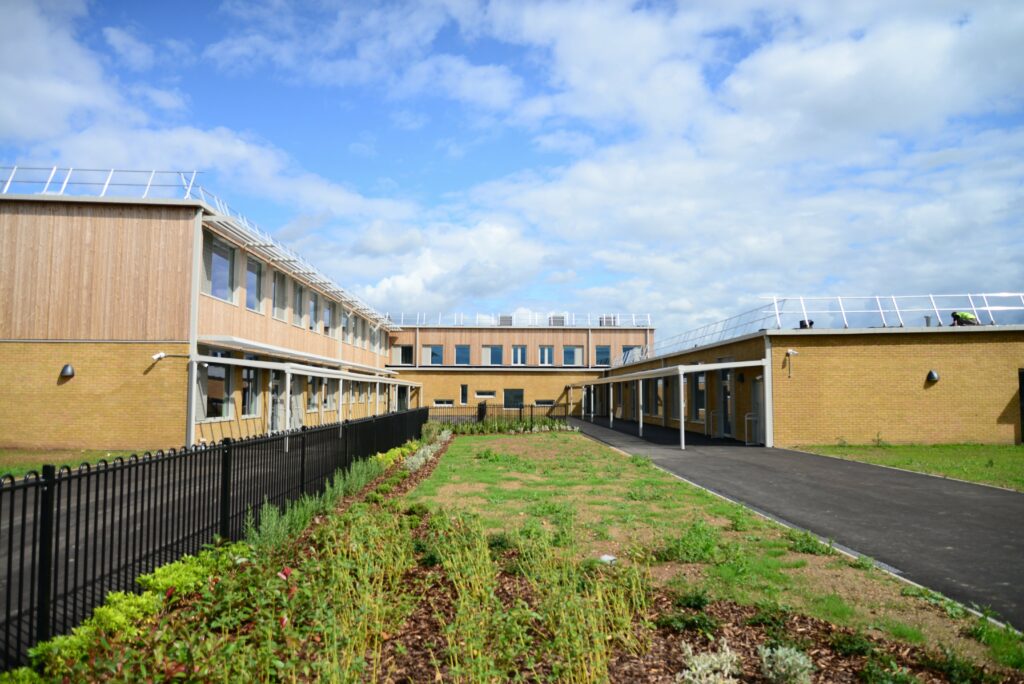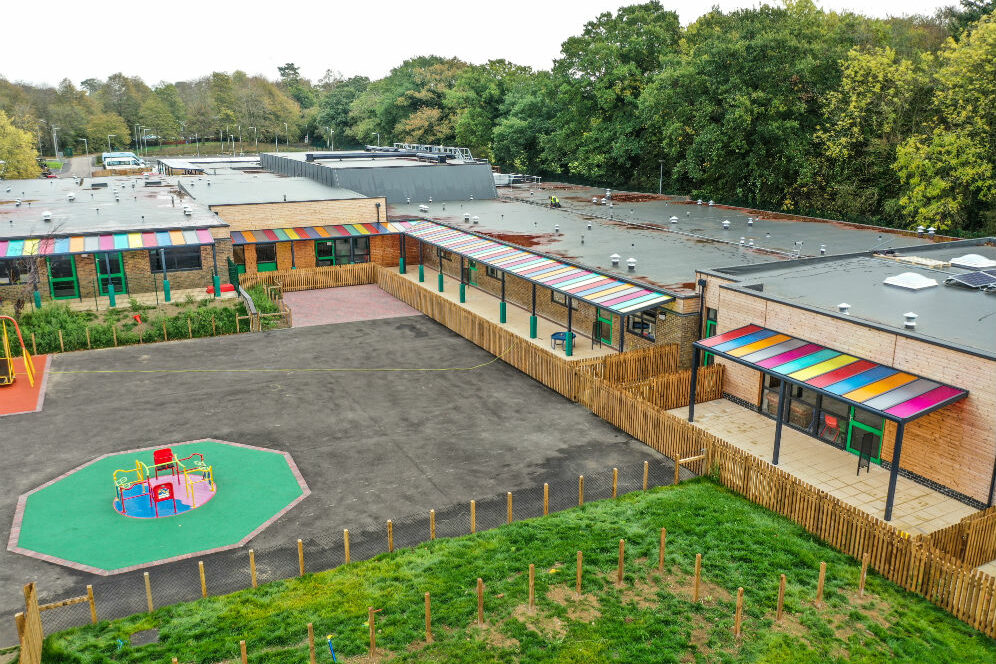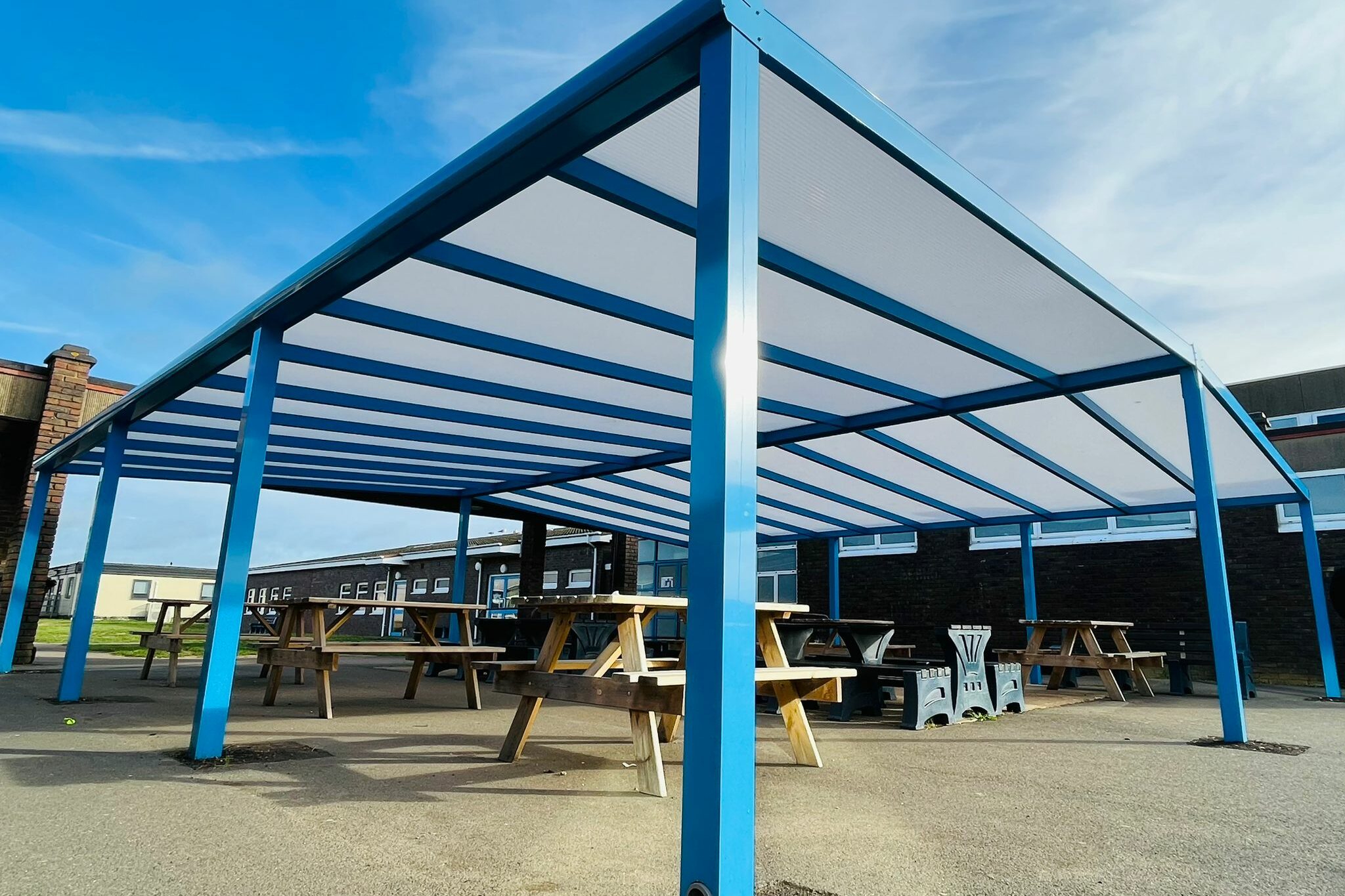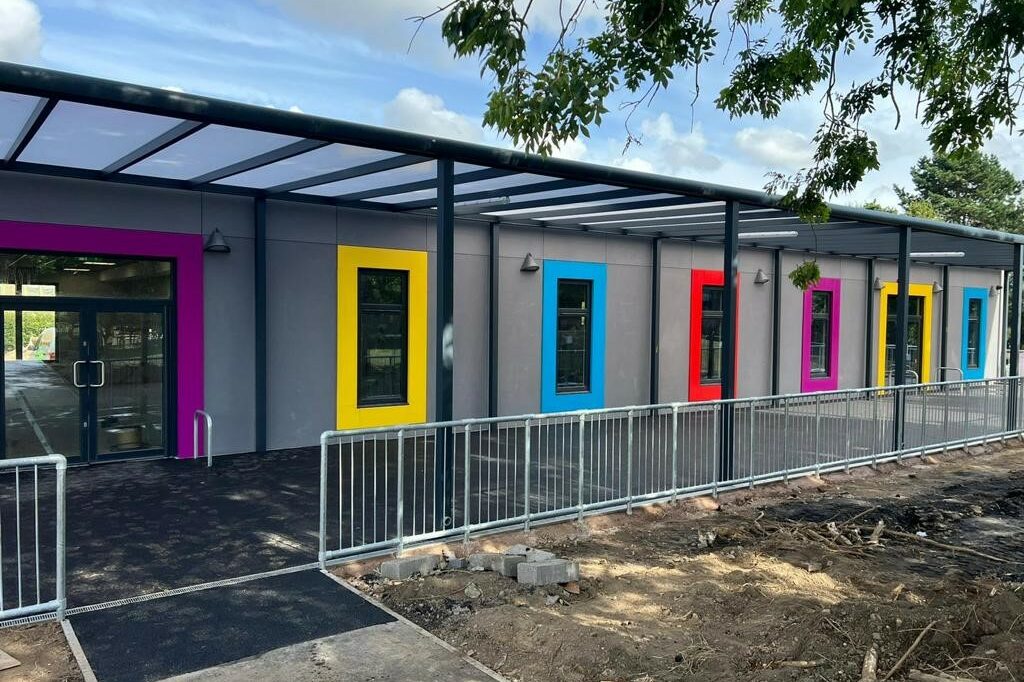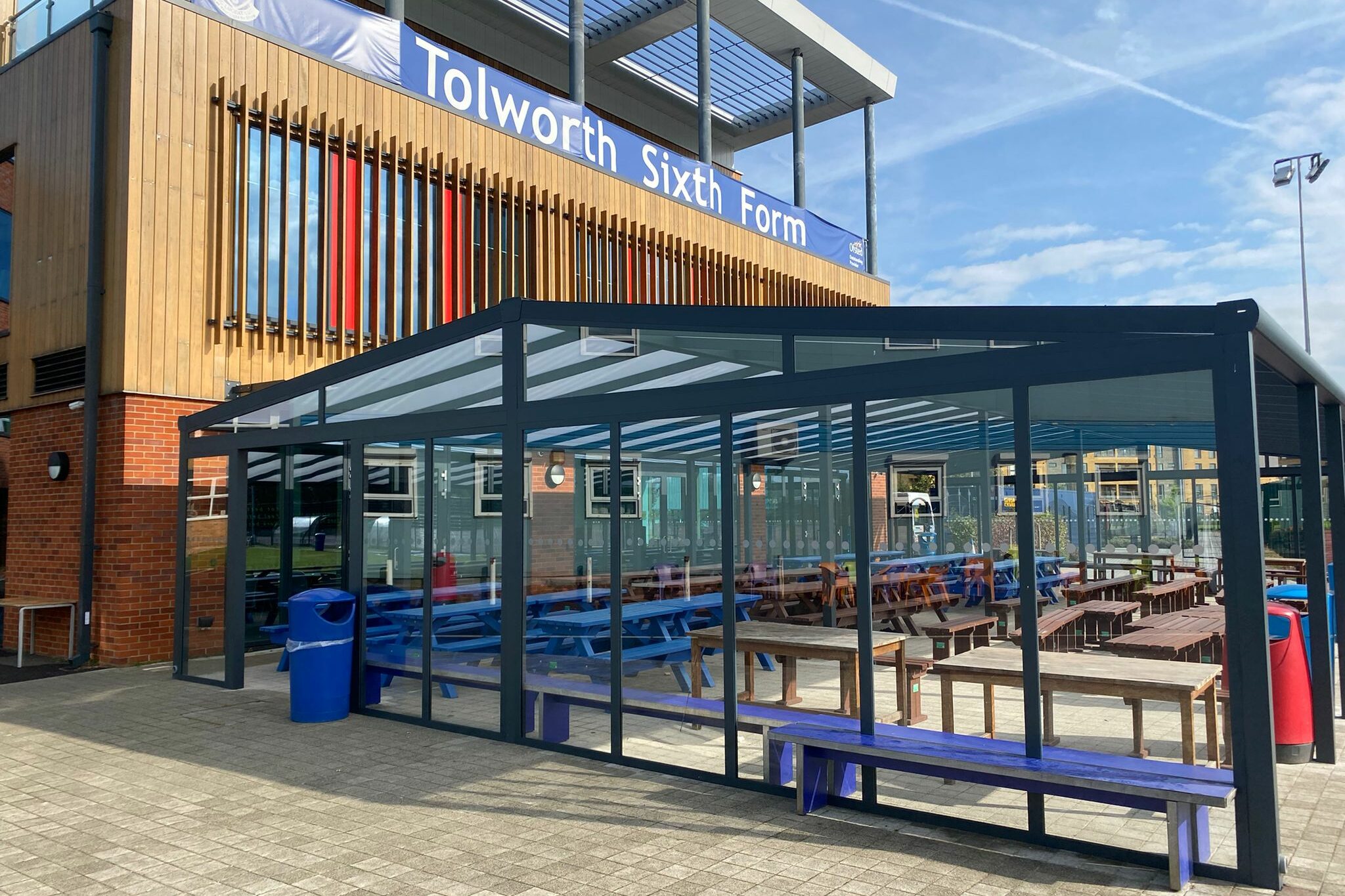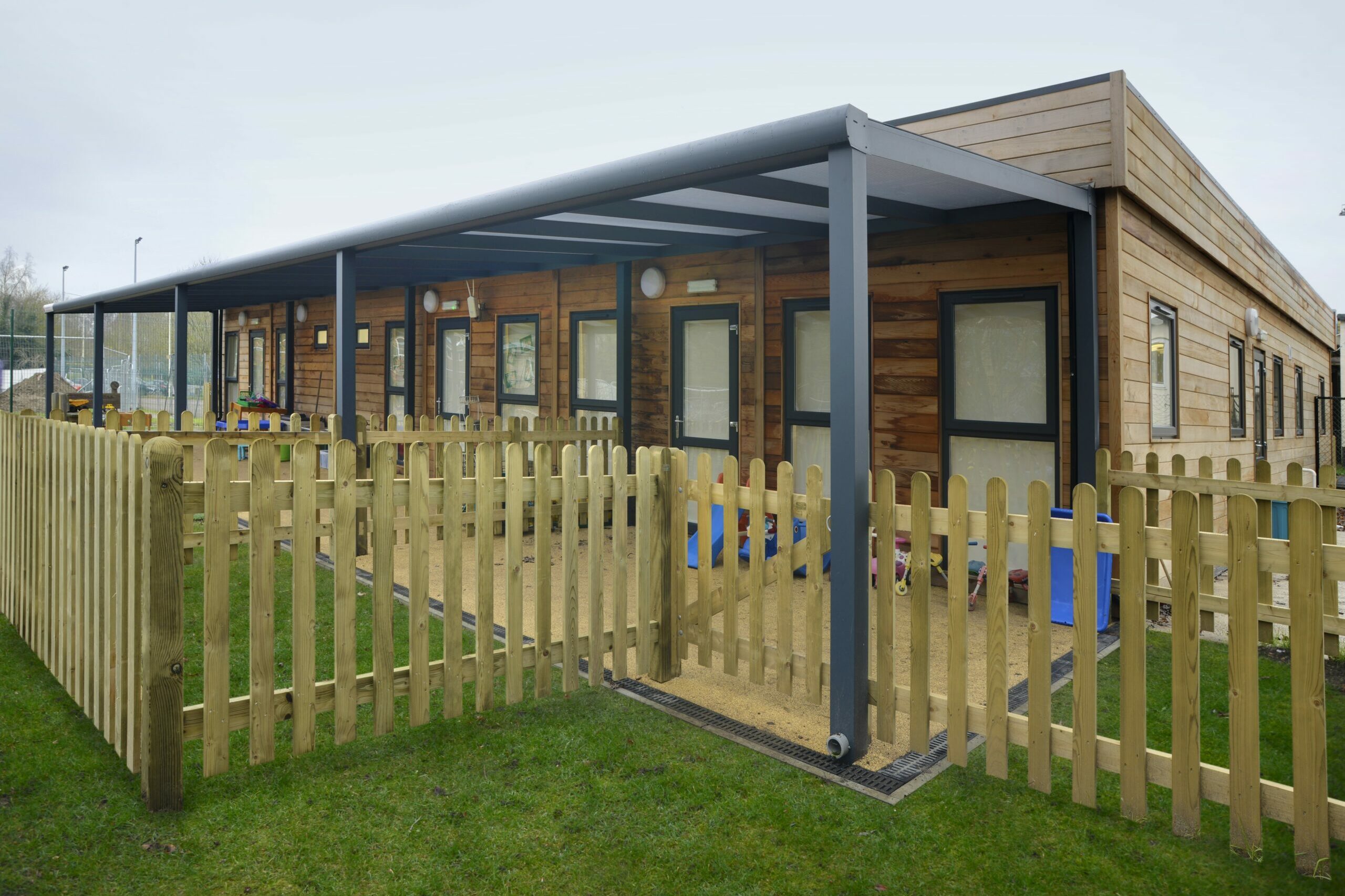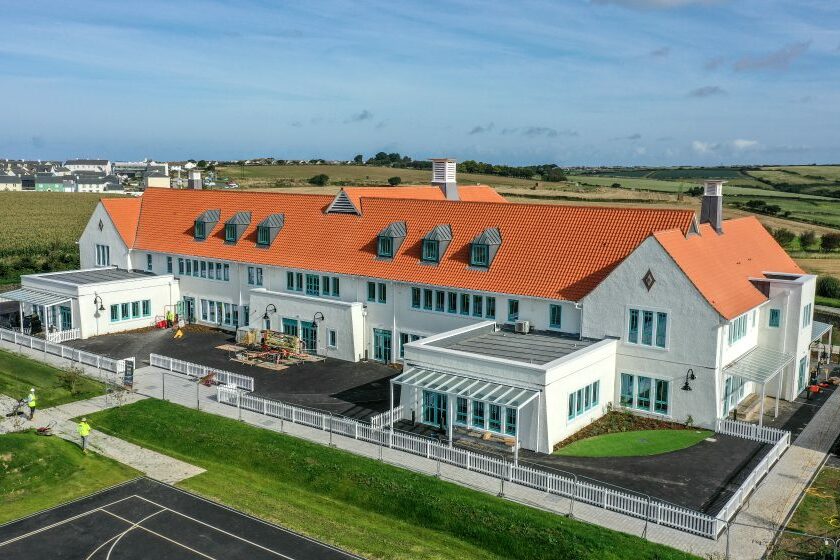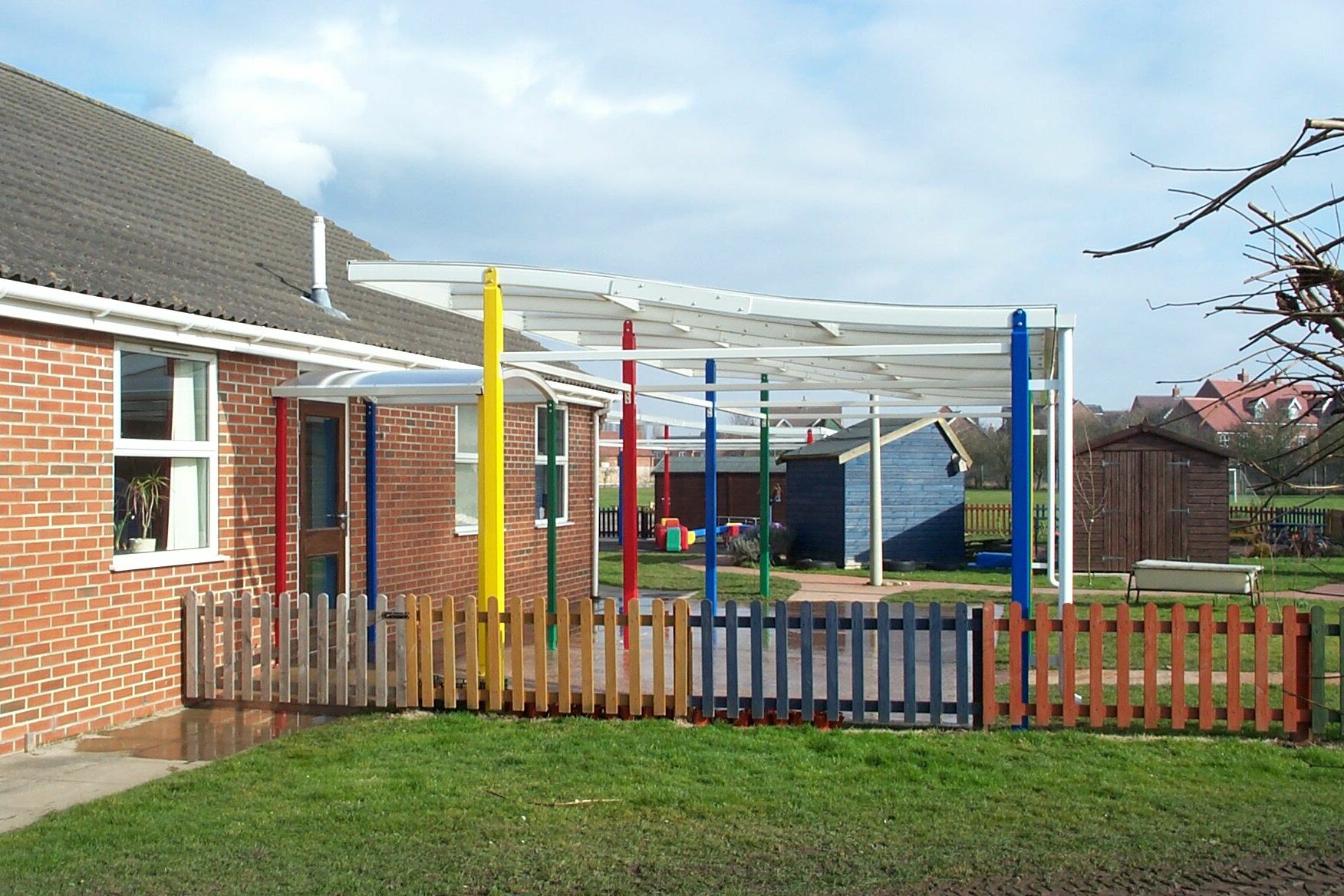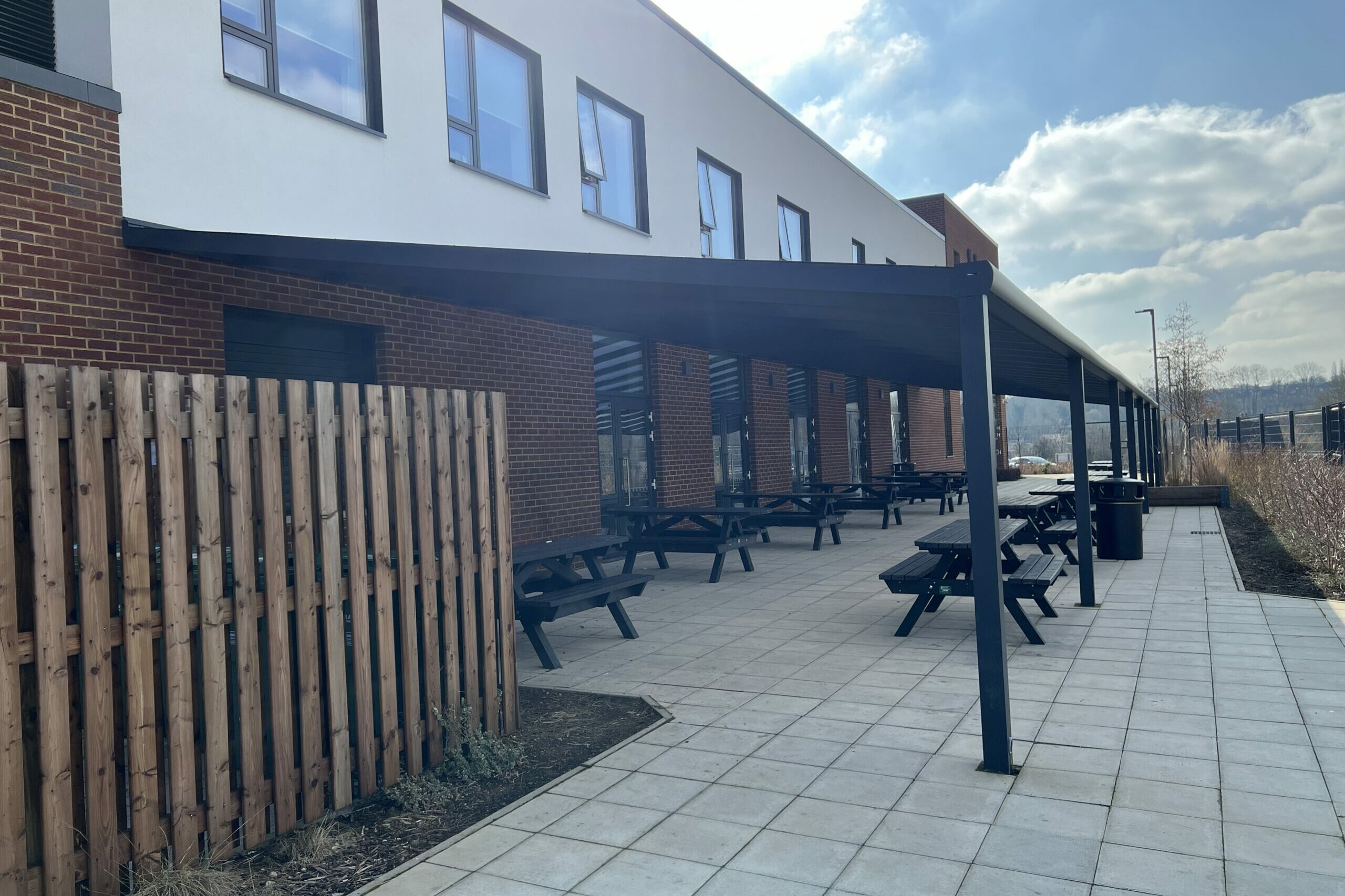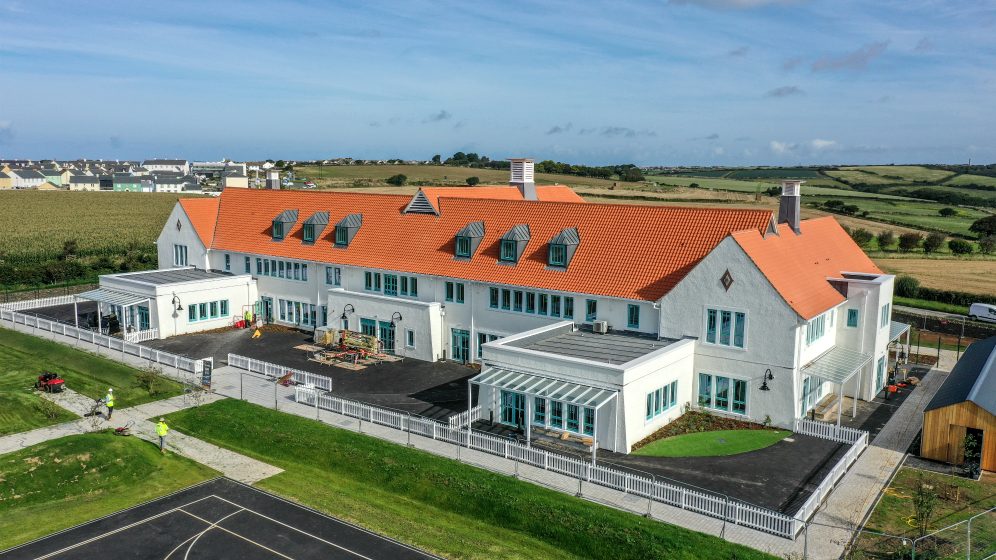
Glass or polycarbonate – what’s the best roof for a canopy?
It’s a choice every specifier of an exterior canopy faces – should they opt for a glass or polycarbonate roof?
There is no right or wrong answer to this question, but specifiers do need to weigh up several factors before deciding which is the right option for them.
Firstly, let’s define our terms. Polycarbonate is a sturdy thermoplastic which, in its natural transparent form, is nearly as good at transmitting light as glass. When we talk about ‘polycarbonate’, we mean the 16mm multiwall polycarbonate most commonly used in canopy structures. This is made up of two layers of cells approximately 8mm high and 15mm wide.
Glass for a canopy roof should be either toughened glass (float glass that has been toughened by a heat process), or laminated glass (two pieces of float glass that are bonded together by a sticky plastic interlayer). Glass roof sheets should have a minimum thickness of 8mm.
So, what is the best roof for a canopy? And what are the differences between glass and polycarbonate?
Strength
No roof is unbreakable. A heavy impact will damage your roof whatever the material.
However, polycarbonate is more flexible than glass under load (for example, when snow fall builds up on the roof). While it can be dented, polycarbonate is extremely robust and difficult to break. This helps prevent vandalism as well as accidental damage. Polycarbonate can buckle or fold on the odd occasion, but it will only break under an extreme and sudden impact.
The material is susceptible to certain solvents, though, which will cause it to crack. Therefore, we recommend checking with your supplier before using any solvents to clean or repair your roof.
As the name suggests, toughened glass is stronger than normal float glass. In the unlikely event the glass breaks, it will shatter into millions of tiny pieces which are not sharp. It is therefore considered ‘safe’. Laminated glass, although not as strong as toughened glass, remains in one piece if it is broken thanks to a very strong interlayer.
Toughened glass is stronger, but if broken leaves a hole through which debris, rain or other materials can fall, while laminated glass will shatter more easily, but the interlayer ensures there is no subsequent hole. Both conform to relevant British Standards. Polycarbonate is less susceptible to damage, and poses less risk of injury if it is damaged.
UV Protection
Both glass and polycarbonate offer excellent protection against UV. Laminated glass is particularly effective, as the plastic interlayer blocks 99% of UV.
Polycarbonate absorbs virtually all UVA and UVB, so it does not pass through to the users. However, such absorption would, over time, discolour the material. For this reason, polycarbonate sheets are usually given additional UV protection to guard the sheet itself.
Light Transmittance
While you may want to keep the UV out, you probably want to let light through most of the time. A lot of canopies and conservatories are installed directly against windows and owners do not want to reduce the amount of natural light entering the building.
Glass will allow the most light through but it is not the only solution. Even an opaque roof will let a good 60% of visible light through, and bring the benefits of not showing dirt.
Noise
The noise of rain falling on polycarbonate can be noticeable, so this may or may not be a big issue but is something worth considering. Rain on glass, meanwhile, sounds much quieter.
If your canopy has side panels, you will find glass provides better soundproofing through the roof than polycarbonate. This is largely due to the greater density of glass.
Aesthetics
Most people would agree that glass looks smarter than polycarbonate. To keep it looking pristine, however, glass will require regular cleaning. In a commercial or educational setting, this inevitably increases the overall cost.
Polycarbonate needs less maintenance, especially the opaque finish which doesn’t show leaves and bird mess from underneath. The cells in polycarbonate can develop stains caused by algae, damp and mildew. A simple maintenance programme should keep this away and the roof will need to be cleaned less frequently than glass.
Sustainability
Whether polycarbonate or glass, canopy materials can and should be recycled when no longer needed. A study in Singapore indicated that, overall, polycarbonate has a greater climate change impact than glass in construction, but precise comparisons for glass or polycarbonate greenhouse and shelter roofs are hard to find.
Cost
This is a strong argument for polycarbonate: 16mm multiwall polycarbonate is at least half the price of glass. If you are on a budget, you will get more canopy for your money with polycarbonate.
Both materials score strongly in different areas. The final choice will depend on your priorities. For a more detailed discussion on your glass or polycarbonate roof options, get in touch here, and have a browse through some of our previous projects below.
